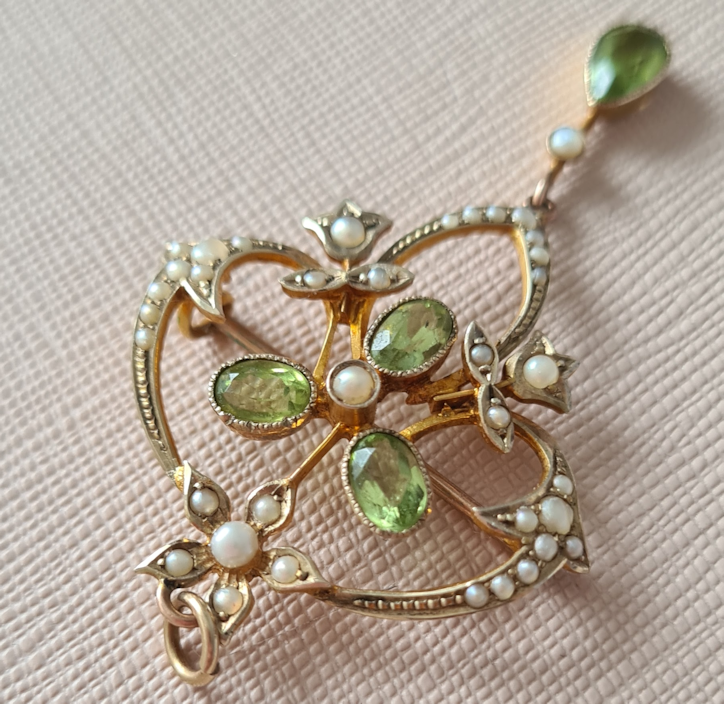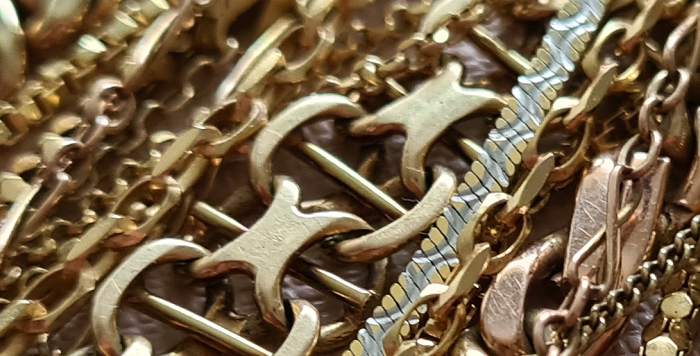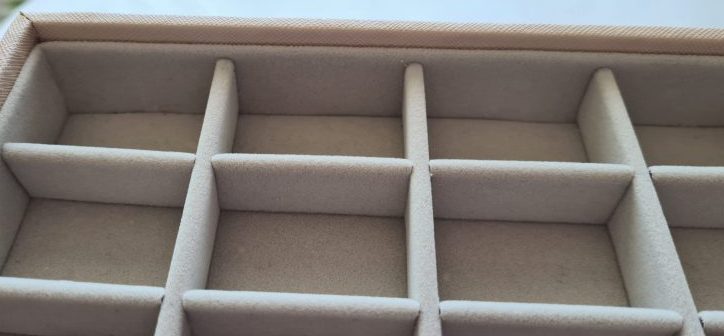
Detecting Damage: How to Spot Repairs and Alterations
Have you ever laid your eyes upon the most magnificent piece of antique jewellery, only to realise that something’s awry? That there’s just something that’s not right? Unfortunately, this is a common occurrence in the world of antique jewellery, and while you may of course love and cherish a piece of jewellery that’s not entirely “right”, all sellers should make sure that they provide complete and honest information about what they’re selling.
An antique piece of jewellery may have changed hands multiple times during its lifetime, and it may have been repaired or altered long before it reached the hands of the current seller. Not knowing the provenance of the piece, the seller may fail to provide information in good faith – he or she may simply not be aware that, say, the earrings they’re selling were made from a pair of cufflinks, or that the bail on a pendant is a replacement. These shortcomings must obviously be forgiven if the replacements or alterations were done well, but I do believe that if I as a potential customer is able to tell that something’s up based on the photos, the seller should not only be aware of the issue, but also disclose it, even if they cannot confirm what’s been done.
I would love to provide you with some glaring examples, but as I hope you will understand, I cannot in good conscience use the photos or descriptions I’ve come across, and I somehow doubt that the sellers in questions would take too kindly to me asking if I may use them as examples of how not to market your antique jewellery. Instead, I’ll give you a list of what to look out for with some anonymised examples.
Missing parts
This one is a source of much annoyance for me, because it’s usually very easy to detect, and so there isn’t really any excuse when a seller fails to mention it in the product description.
Bails are among the most common missing parts, especially those that were made to be removable. A lot of pendant brooches were fitted with a loop on the back where the bail could be attached and detached depending on how the piece was to be worn, and it’s really no wonder that a lot of these bails were lost. One may of course use the piece of jewellery as a brooch, or even thread a ribbon (or a necklace, for that matter) through the loop and wear it around one’s neck, but the item is still incomplete, and anyone selling old jewellery should be able to recognise that the bail is missing and be upfront about it.

Tiny pendants suspended from the main piece may also get lost at some point, and it can be difficult to tell that something’s missing. In most cases, however, there will be an eye (or more) at the bottom of the pendant that in its current form serve no purpose. This is a dead giveaway for a missing part, and again, the seller should be able to tell – and should tell you, the customer. In other cases it may be difficult to tell for sure – there may for instance be components used that have eyes in multiple places, even if not all of them have been used.
Another issue you may come across, is pentant brooches where the brooch findings have been removed, either partly or completely. In some cases, the catch and the hinge of the needle will still be left in place. I find it utterly fascinating that someone may want to sell such an item without mentioning that the piece is in fact partly broken, but I’ve seen it multiple times. When a skilled goldsmith has been involved, the catch and the hinge will have been sawed off, and the alteration may hardly be visible, but as the bail on pendant brooches will either be removable or can be hidden on the back of the piece, you will usually be able to tell that the pendant you’re looking at used to be a brooch as well. That being said, having the the brooch findings removed may be something you prefer – depending on the design, the needle on the back may be be somewhat of an eyesore when the piece is worn as a pendant, but the seller should definitely be able to tell that an alteration has been done and that the item is not in its original shape.
Replacements
Replacements can be tricky, but I believe sellers ought to do what they can to rule them out when possible.
One of the most frequent replacements I come across, is bails. The most obvious ones are detailed, complicated pendants with just a jump ring for a bail – they may be original, but it’s quite unlikely. Look at how well the colour of the gold is matched, and consider the overall look of the pendant. A simple 9 ct pendant will be more likely to have such a simple bail than a more opulent 15 or 18 ct one.

Sometimes, stones or smaller pendants may have been lost, and a former owner may have replaced them as best as they could. When done well, nobody will be able to tell, and you can hardly blame the seller for not being psychic. In other cases, however, the alteration is very obvious, and should be pointed out. This especially applies to smaller drop pendants where the colour of the gold doesn’t match the rest of the item, or where stones look out of place, because of either the colour or the cut. Examples of this would be a garnet pendant with a pendant drop with an amethyst or a necklace made up of pear cut peridots with a baguette cut stone in the centre.

Repurposed pieces
As with the initial example of cuff links, repurposed pieces may be very hard to identify to both seller and buyer, but in some cases, it should be fairly obvious.
I recently came across a rather striking pendant that didn’t really look anything like other pendants or necklaces from the time period. I first noticed that there wasn’t a normal bail, but rather a hoop on the back, and I thought that it would perhaps have been made to be attached to a ribbon. It was however evident from the photos that it wouldn’t lie flat against the wearer’s neck due to the shape of the hoop, which made me look at it more closely, and then I saw it: it wasn’t a pendant, it was an earring! The hoop had, it seemed, been soldered in place, and I figured a previous owner must have either lost the other half of the pair or perhaps given one altered earring to each of her daughters, but it made me quite worried that the seller (who I otherwise trust) either hadn’t noticed this or had decided not to disclose it to potential buyers – after all, a single earring should not be valued based on it being a unique pendant.
A popular alteration is turning bar pins into necklaces, but I’ve yet to come across anyone trying to pass these off as unadulterated antiques. For other kinds of jewellery, you basically need to have a basic understanding of the trends and technology of the time and be able to recognise if what you’re looking at would make sense in its current form at the supposed time of manufacture.
Glue
If someone tells you to fix your broken antique with a drop of superglue, you should run. Not only do you risk making a mess, you may also sabotage future repairs. Needless to say, repairs should be done by skilled craftspeople, preferably a goldsmith who specialises in the repair of old jewellery (these may be hard to come by), but there are a lot of antique jewellery on the market where someone has been a bit too triggerhappy with their superglue.

Now, a glue repair may or may not be a big issue, but in some cases there will be a bit of a mess around the reattached stone or pearl, and the seller should absolutely both see and mention it to potential customers. Glue may not show up too well on photos, so if you’re in doubt, look at the prongs. If you see a stone with worn down prongs, or too few prongs to keep it safely in place, you either risk losing the stone or it will be glued in place. My advice would be to contact the seller and ask if you’re in doubt – as mentioned above, repairing something that has been glued is difficult, and the seller should be upfront about it having been done.
Repairs
One of the great qualities of gold is that it doesn’t really tarnish (the other metals in the alloy may however tarnish), so why do we sometimes come across gold jewellery with darkened areas or parts that just don’t seem to match in colour? The answer is, in most cases, that the piece has been repaired. This is especially common in old rings where the band has been worn down, and where the goldsmith that replaced the band didn’t match the colour properly. While matching the fineness of the gold should be easy enough, the metals making up the gold alloy have changed over time in accordance with the taste of the era – at the turn of the last century, yellow gold had a rosy tint to it (yet far less rosy than rose gold) and 15 ct can be a tiny bit more yellow than 14 ct.

Such replacements are usually easily detectable, and should be pointed out by the seller. In addition, the fineness of the gold (if no hallmarks are present) should be tested in both the original part and the repaired part.
Occasionally, you may come across a piece of jewellery where a piece of gold has been reinforced or repaired more or less skillfully by soldering on some extra gold on the back. This should be pointed out regardless, but when done well, it doesn’t take anything away from the beauty of the piece, and doesn’t alter the value all that much. However, when less well done, the balance of the piece may be affected and the added bulk may be visible when the piece is worn. I have also seen examples of the gold surrounding the repair being darkened, either because some metal in the alloy reacted to the heat from the soldering, or because some impurities on the surface of the piece has been burnt. When the piece of jewellery hasn’t been cleaned up, it’s hard to tell (especially when shopping online) if the issue can be fixed, or if you’d be stuck with a discoloured brooch, so again, the seller should let you know!
Can I trust the seller?
I always get a bit wary of sellers who don’t provide what I consider necessary details about a piece of jewellery. I want clear photos of all parts of it, including the back. I want to know what the seller knows about the piece and what they just think they know – that is, unless the gold is hallmarked, I want to know that they’ve tested the gold, and I want to know that they’ve checked the refractive index of the stones to verify that they’re not just paste. If they’re uncertain, I want to know that too. And finally, if they either know or suspect that what they’re selling isn’t exactly the same as what ye olde goldsmith sold to his customer over a century ago, I want to know. This is basically the difference between shopping from a curated selection and stopping by an estate sale, and you should feel confident in trusting the seller.
If you’re not afraid that the piece will be bought by someone else in the meantime, I’d recommend reaching out to the seller and ask them about the piece – even if you don’t wind up buying it, the seller may add the information you’ve requested to the product description and help the next potential customer make an informed decision, and you may even help the seller, if they didn’t intend to be obtuse.







-
-
2 years
Tagged gold